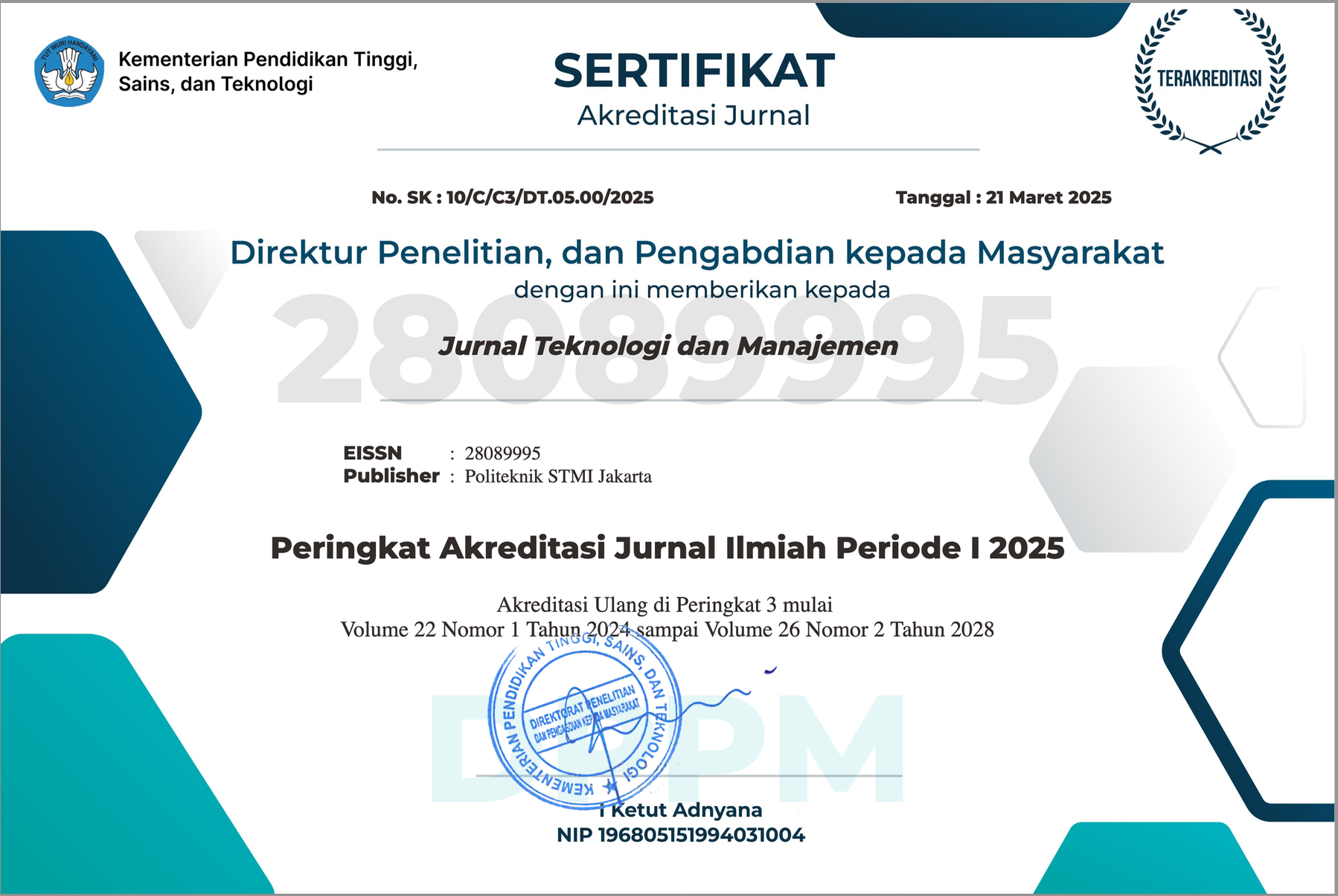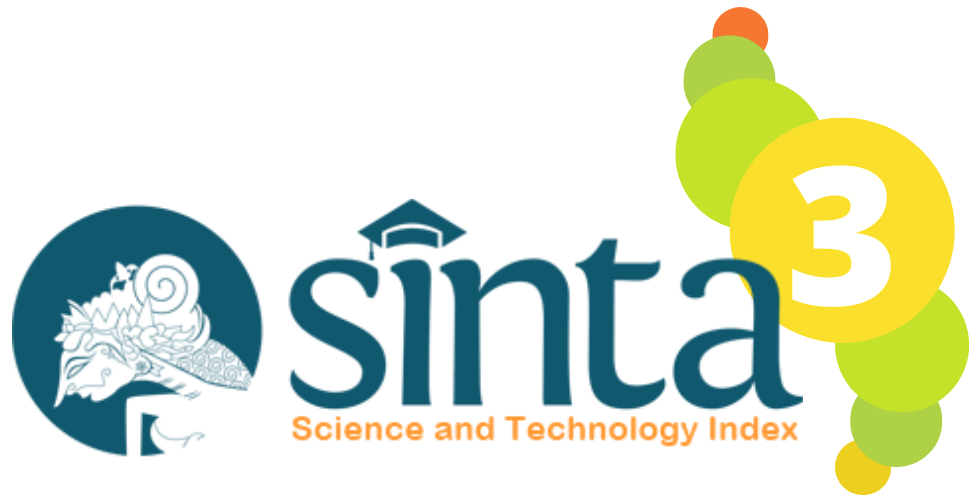Analysis and Evaluation of Productivity Using the Marvin E. Mundel Method and the Productivity Evaluation Tree (PET) at PT. YZ
DOI:
https://doi.org/10.52330/jtm.v22i1.184Keywords:
Marvin E Mundel, Measurement, PET, ProductivityAbstract
PT. YZ is currently still not optimal in utilizing the resources it has (input) so that the results (output) produced are not in accordance with the target which results in a decrease in company productivity and so productivity measurements must be carried out in the company. Besides that, at PT. YZ has never conducted a thorough productivity measurement during the production process. Therefore, in this study, productivity measurements were carried out with the aim of knowing the results of measuring productivity levels at PT. YZ, to find out the factors causing a decrease in productivity levels and evaluate productivity against measurement results that have low productivity. The proper method for analyzing these problems is to use the Marvin E Mundel method to measure productivity and the Productivity Evaluation Tree (PET) method is used to evaluate productivity issues. In carrying out processing using this method, it is assisted by the Embarcadero-Dev C ++ Software. Based on the results of research using the Marvin E. Mundel method, it was found that company productivity had decreased, namely that in 2021 total productivity was 1.14 and in 2022 total productivity was 1.13. The cause of the decline in company productivity is that the labor factor is not clearly regulated for sanctions and rewards for the company; the raw material factor is the long distance of delivery from the raw material supplier to the production site; and the energy factor has not yet carried out accurate calculations regarding the use of electricity for the process. Production and machine factors have not yet established a machine maintenance schedule. The evaluation results using the Productivity Evaluation Tree (PET) method show that total productivity has increased; in 2022, total productivity was 1.13, and in 2023, total productivity was 1.15. To increase productivity, this was done by reducing input, namely the number of workers. By reducing the number of workers, productivity increases.
References
Abbes, N., Sejri, N., Chaabouni, Y., & Cheikhrouhou, M. (2018). Application of Six Sigma in Clothing SMEs: A case study. IOP Conference Series: Materials Science and Engineering, 460(1). https://doi.org/10.1088/1757-899X/460/1/012009
Anis, M., Nandiroh, S., & Supriyanto, A. (2007). Usaha Peningkatan Produktivitas Dengan Productivity Evaluation Tree (PET) Models. Jurnal Ilmiah Teknik Industri, 5(3), 106–112.
Lestari, Y. E., Rifai, A., & Muwardi, D. (2019). Analisis Produktivitas Pengolahan Minyak Kelapa Sawit denganMetode Marvin E. Mundel. Journal of Agribusiness and Community Empowerment (JACE), 2(2), 41–48.
Ollifia, A. N., & Lukmandono. (2019). Analisis Produktivitas Menggunakan Metode Marvin E. Mundel dan Productivity Evaluation Tree (PET). Seminar Nasional Sains Dan Teknologi Terapan VII, 303–308.
Sri Rejeki, K., Sinulingga, S., & Tarigan, U. (2013). Evaluasi Dan Analisis Produktivitas Dengan Menggunakan Metode Marvin E. Mundel Di Pt. Xyz. Jurnal Teknik Industri FT USU, 2(1), 48–53.
Suhartini, S., & Basjir, M. (2022). Pengukuran Produktivitas Pada Produk Plastik untuk Meningkatan Daya Saing. Jurnal Serambi Engineering, 7(3), 3331–3337. https://doi.org/10.32672/jse.v7i3.4263
Sumasto, F., Arliananda, D. A., Imansuri, F., Aisyah, S., & Pratama, I. R. (2023). Fault Tree Analysis: A Path to Improving Quality in Part Stay Protector A Comp. Journal Européen Des Systèmes Automatisés, 56(05), 757–764. https://doi.org/10.18280/jesa.560506
Sumasto, F., Arliananda, D. A., Imansuri, F., Aisyah, S., & Purwojatmiko, B. H. (2023). Enhancing Automotive Part Quality in SMEs through DMAIC Implementation: A Case Study in Indonesian Automotive Manufacturing. Quality Innovation Prosperity, 27(3), 57–74. https://doi.org/10.12776/QIP.V27I3.1889
Sumasto, F., Maharani, C. P., Purwojatmiko, B. H., Imansuri, F., & Aisyah, S. (2023). PDCA Method Implementation to Reduce the Potential Product Defects in the Automotive Components Industry. Indonesian Journal of Industrial Engineering & Management, 4(2), 87–98. https://doi.org/10.22441/ijiem.v4i2.19527
Surya, B., Menne, F., Sabhan, H., Suriani, S., Abubakar, H., & Idris, M. (2021). Economic growth, increasing productivity of smes, and open innovation. Journal of Open Innovation: Technology, Market, and Complexity, 7(1), 1–37. https://doi.org/10.3390/joitmc7010020
Syahputra, A., & Andriani, M. (2021). Strategi Peningkatan Produktivitas Perusahaan Menggunakan Total Productivity Model (Tpm) Di Pt. Dolomit Putra Tamiang. Jurnal Industri Samudra, 2(1), 2797–7730.
Utomo, D. P., & Purnama, J. (2023). Analisis Produktivitas Dengan Metode Marvin E. Mundel Pada Pt. Indo Lautan Makmur. JIEMS (Journal of Industrial Engineering and Management Systems), 16(1), 1–8. https://doi.org/10.30813/jiems.v16i1.4561
Wardhani, M. I. A., & Realita, T. N. (2022). 5S As a Form of Lean Manufacturing Implementation in the Perspective of Human Resources: A Case Study in Food SMEs. SOSMANIORA (Jurnal Ilmu Sosial Dan Humaniora), 1(4), 599–605. https://doi.org/10.55123/sosmaniora.v1i4.1275
Zadry, H. R., & Darwin, R. (2020). The Success of 5S and PDCA Implementation in Increasing the Productivity of an SME in West Sumatra. IOP Conference Series: Materials Science and Engineering, 1003(1). https://doi.org/10.1088/1757-899X/1003/1/012075
Downloads
Published
How to Cite
Issue
Section
License
Copyright (c) 2024 Jurnal Teknologi dan Manajemen

This work is licensed under a Creative Commons Attribution-NonCommercial 4.0 International License.



















